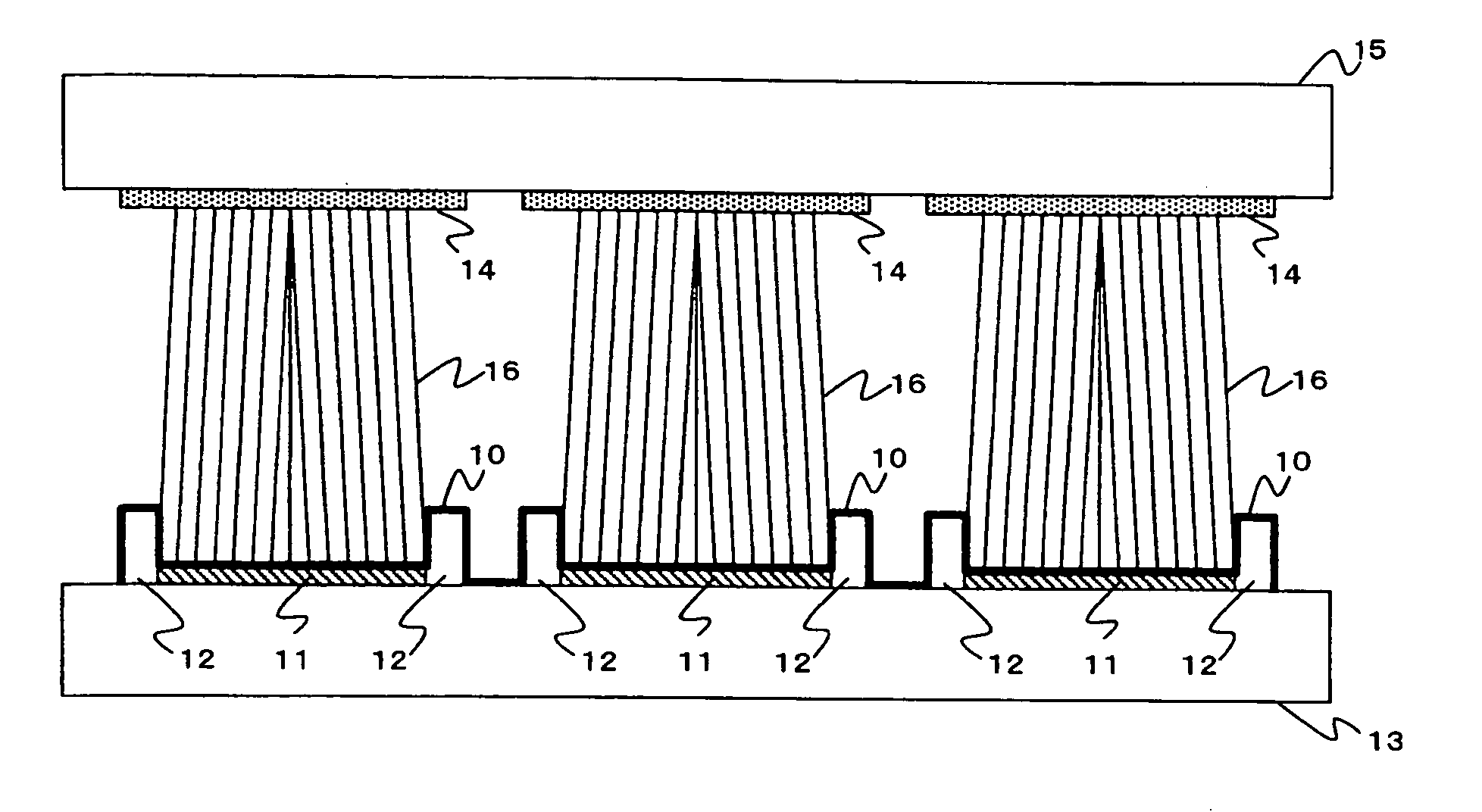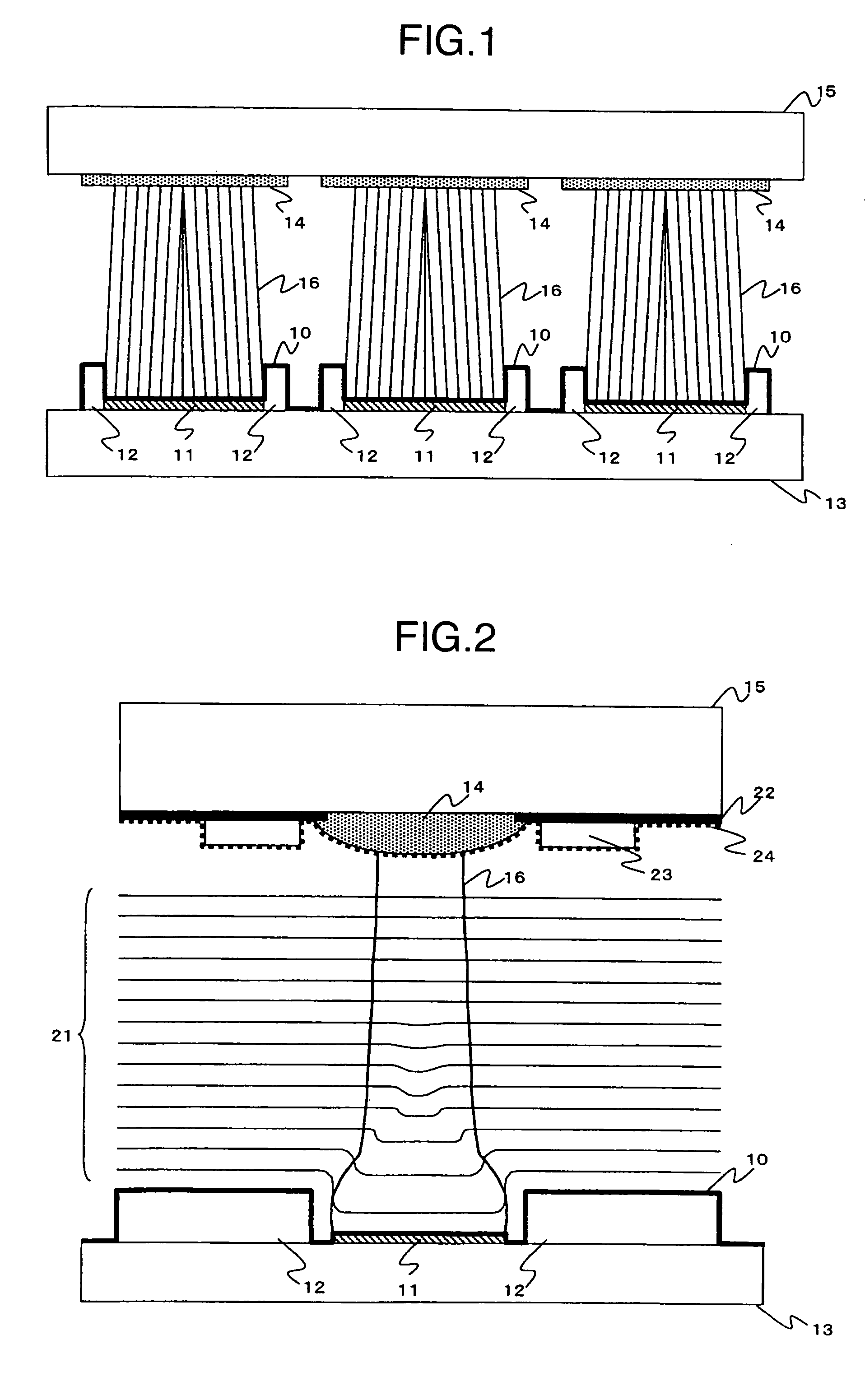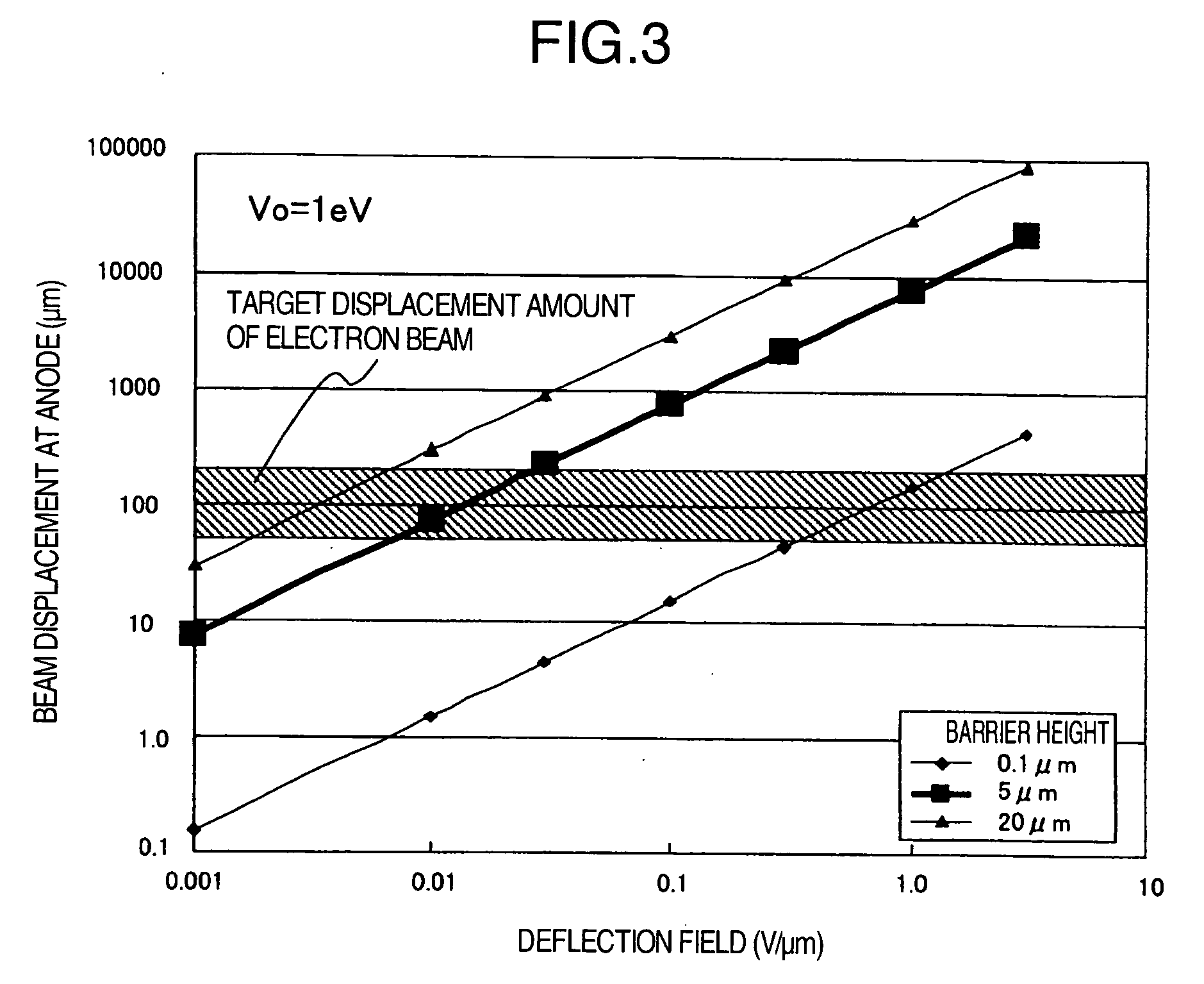Light emitting display device
a display device and light-emitting technology, applied in the direction of discharge tube luminescnet screens, discharge tube/lamp details, cathode ray tubes/electron beam tubes, etc., can solve the problems of low efficiency of electron beam use, low reliability, low luminance and efficiency, etc., to reduce the excitation loss of electron beam, reduce image quality, and increase luminance and efficiency
- Summary
- Abstract
- Description
- Claims
- Application Information
AI Technical Summary
Benefits of technology
Problems solved by technology
Method used
Image
Examples
embodiment 1
[0027]FIG. 1 is a partial cross sectional view of pixels in a light emitting display device according to an embodiment of the present invention. MIM is used as an electron emitter element 11 which is surrounded by a conductive barrier 12 (scanning wire).
[0028] The electron emitter element 11 is surrounded by a barrier 12 of the same potential as the cathode potential. At least a surface of the barrier 12 is formed by a conductive layer so that the surface potential of the barrier 12 and the electron emitter element 11 are identical. That is, the electron emitter element 11 and the barrier 12 are covered by an upper electrode 10.
[0029] The electron emitter element 11 and the barrier 12 are formed on a cathode substrate 13. An anode substrate 15 having R (red), G (green), and B (blue) color phosphor 14 opposes to the cathode substrate 13. The color phosphors 14 are excited to emit colors by the electron beam 16 emitted from the electron emitter element 11.
[0030]FIG. 2 is a conceptu...
embodiment 2
[0039] This embodiment shows a specific pixel structure for easily realizing the Embodiment 1. In addition to this, this embodiment has a structure for increasing the electron beam displacement and reducing the affect of spacer bonding member required for the display panel structure to the electron beam displacement. Moreover, this embodiment does not irradiate a phosphor of an adjacent pixel even there is a minute amount of electron beam which has not been converged.
[0040]FIG. 4 shows a planar structure of a pixel. FIG. 5 shows a cross sectional view of a pixel in which the positions shown by arrows A, B, C, D correspond to the positions A, B, C, D in FIG. 4. The electron emitter element 11 is provided in the groove 42 of the scanning wire 41, i.e., the groove 42 of the upper electrode 10 of the scanning wire 41. The electron emitter element 11 is selected by the scanning wire 41 and the signal wire 49 and emits an electron beam 16.
[0041] In FIG. 4, the distance from the peripher...
embodiment 3
[0049]FIG. 7A shows a pixel configuration employing the SED (surface-conduction electron-emitting display) and FIG. 7B is a conceptual diagram of the pixel circuit. As shown in FIG. 7A, two platinum display electrodes 72, 73 connected to the scanning wire 41 and the signal line 49 are exposed to an opening 71 of the inter-layer insulation film 53 and a PbO pattern is formed between the display electrodes.
[0050] The SED element 74 is surrounded by the opening 75 of the scanning wire 41. As shown in FIG. 7B, the SED element 74 is surrounded by the barrier 12 connected to the scanning wire 41, thereby forming an electron lens using the scanning wire 41 as the barrier 12. It should be noted that the opening 75 may be arranged at the signal wire. In this case, the barrier 12 has a potential different from that of the scanning wire 41. Accordingly, it is possible to obtain a greater electron beam convergence effect.
PUM
 Login to View More
Login to View More Abstract
Description
Claims
Application Information
 Login to View More
Login to View More - R&D
- Intellectual Property
- Life Sciences
- Materials
- Tech Scout
- Unparalleled Data Quality
- Higher Quality Content
- 60% Fewer Hallucinations
Browse by: Latest US Patents, China's latest patents, Technical Efficacy Thesaurus, Application Domain, Technology Topic, Popular Technical Reports.
© 2025 PatSnap. All rights reserved.Legal|Privacy policy|Modern Slavery Act Transparency Statement|Sitemap|About US| Contact US: help@patsnap.com



